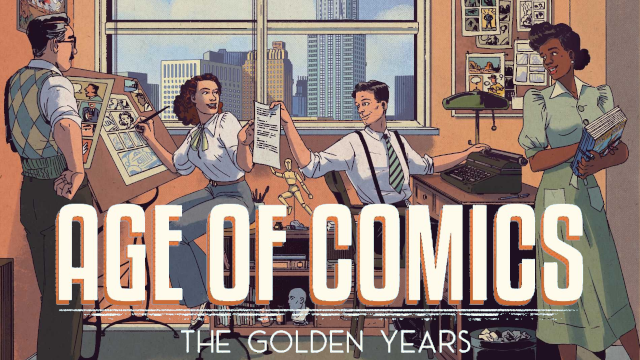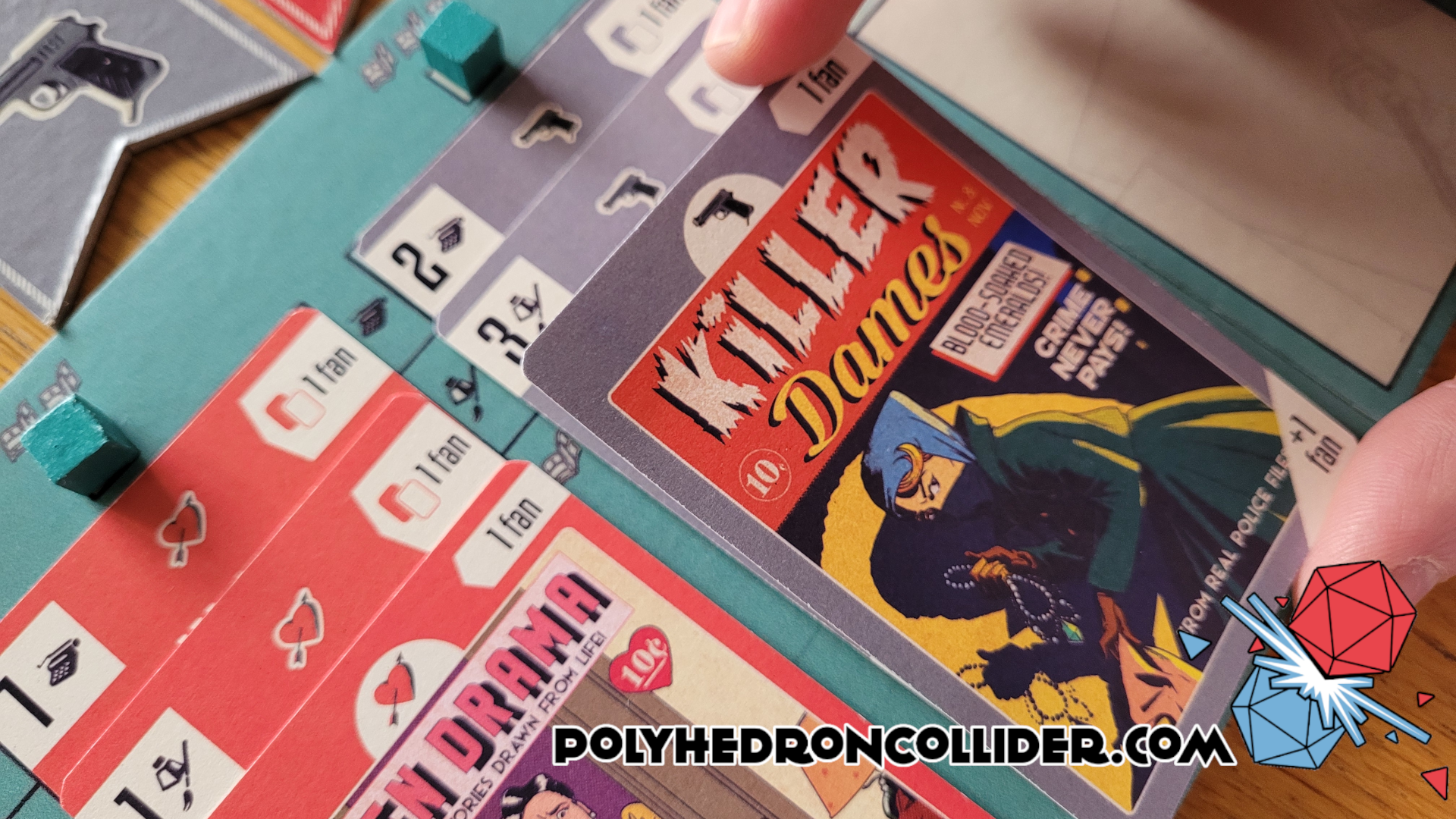As far as board game themes go, it is pretty niche, Age of Comics: The Golden Years is about the comic book publishing industry of the 1940s. So, chances are if you’re reading this, it’s because you like the idea of a board game about comic books (of which there are frighteningly few) and you want some validation that you’ve made a good purchase or you need to be tipped off the fence.
To succeed in the comic book business, at least in this game, you’ll have to plan and Age of Comic forces you into thinking this way, like any good Euro game, the key is planning, staying adaptable and looking for the perfectly timed ‘Dick’ move – and there is scope for plenty of this in Age of Comics.
The first player to take any given action always gets the better end of the deal, with subsequent uses of the same action quickly descending to barrel-scraping territory. This simple variant of worker placement creates a wonderful layer of pressure on the game, and this concept of racing to do these actions is continued with the bonus 'Special Actions'. As you print more and more comics you’ll unlock some of these which allow you to Hype up your in-development comics, printing in high colour, re-assign staff, etc. Printing more comics not only gives you access to what I refer to as the ‘Assistant Cubes’ (for all this game’s bling and arguably over-production, having three 4mm cubes to act as Special Actions/Assistant Editors, is I hope just in the prototype…) but a wider array of the Special Actions. Use of these is absolutely pivotal to scoring consistently and high, so the sooner you can get your comic books out the door and into the hands of fans the better…right?
Mechanics, strategy and theme all mix here in a spectacular fashion as you have to weigh up not only quality over quantity, but take into account the resources, the timing and the availability of assets. It’s in the moments when you realise you just need to do A and then B, then in the next round you’ll have C which means you can do D…if nobody else does any of those things before you, but most importantly when you are thinking about these steps, you are constructing a narrative about printing a comic book, not just moving tokens around on a board. The theme and the concept of the Age of Comics permeate everything.
The designers deliberately and rather stylishly passed on trite motifs and clichéd Easter eggs, preferring to create original works. True, some art does pay homage to real comic books, but for the most part, these are all a knowing and affectionate homages to this era of the industry. I would wager in fact, that if you are a comic book fan, then when you open your copy of this game the first thing you’ll do is look through the Original Comic Book and Rip-Off cards, you’ll want to admire these almost as if they are genuine comic books.
For me playing, teaching, and explaining the rules it makes sense to pull on the theme to make it that little bit easier to explain and understand. The Sales Orders aren’t just about moving a disk around a map collecting tokens, for example, that is your editor driving around Manhattan going from comic book stores to newsstands trying to sell comics. The ability to reassign ‘off-genre creatives’ for a comic book (another Special Action) isn’t just about set collection, it’s about your company finally assigning a well-known horror writer to ‘Haunted Tales’. That’s why it gets a bump in fans, it becomes a better comic book. It now scores more victory points too.
Age of Comics is a Kickstarter game through and through, which is no bad thing, but I have found that at turns the game is a little faffy. It has enough bits and bobs to make a utility belt proud. The small comic book tokens, which you’ll have seen in pride of place in most photos of this game (mine included) are fantastic Kickstarter board game bling, but they are the type of thing that had this game come straight to retail they wouldn’t be there, in fact, many of the tokens could be easily be downgraded. Again, it’s no bad thing, it does just mean that set-up and tear-down takes quite a while and there will be moments when you think “is that necessary” – I’m looking at you creative-specific enhancement tokens! The rulebook too suffers from Kickstarteritus, and although it’s full of useful examples I’ve found and encountered many quirks, sections of opacity and one case of straight-up contradiction – hopefully this will all be cleared up in the final version.
I’ve thoroughly enjoyed my time playing Age of Comics. True, it was the theme that drew me in, and it would be cheesy and cliché to say that I stayed for the gameplay, but really, the merging of theme and mechanics is what makes this game special and different. The love for comic books is in every design decision and in every component, that style and focus on the theme is everywhere.
Underneath all of the Kickstarter bling and all of the comic book fanboy theme, it is a solid, well-thought-out, enjoyable game. If I had a board game wish, it is that Age of Comics: The Golden Years is the first in the series of these types of games, in much the same way Garphill have done the North, West and South series, I hope that in a few years I can review the different and original sequel: Age of Comics: The Silver Years.
This Kickstarter preview is based on a prototype version of the game provided by the publisher; the
final product may look, play or smell different to that used in this
preview.







No comments:
Post a Comment